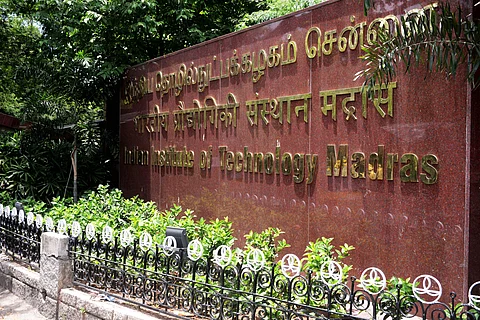

With the intention of implementing groundwater technology to ensure flood and drought mitigation near Ayankulam village, Thisayanvilai taluk of Tirunelveli district in Tamil Nadu, researchers from the Indian Institute of Technology (IIT), Madras have submitted a proposal to the government. This was informed by the institute on Friday, February 18.
With Dr Venkatraman Srinivasan, Assistant Professor, Department of Civil Engineering, at the helm of things, the team even visited the site in December 2021 to look into an open agricultural well near the village. The locals had claimed that it is this well that was recharged with an estimated 1,500-2,500 litres of water, that too, every second without ever overflowing, as reported by PTI.
It was from the excess overflow of an adjacent minor irrigation tank which was, in turn, due to the record monsoon rains of November-December 2021, where the recharged water came from.
The well not only went on to become a local attraction, it was also termed as a miracle well. That's because usually, wells fill up and overflow at such recharge rates.
The team also looked into the potential of this and other wells in the region so that they can be used as rapid aquifer recharge during floods for storage and withdrawal during the sweltering summer months.
The implementation of this rapid recharge technology, once fully developed, can lead to several benefits including flood and drought mitigation, and also, create a subsurface dam for water storage without evaporation loss, automatic distribution of water and equitably throughout the region, clean water when managed aptly plus prevention and reversal of saltwater intrusion in coastal aquifers.
It was to the Tirunelveli district administration that the proposal for the project was submitted with a request to study the phenomenon, the press release said. The locals have been using this method of well recharge during intense monsoons for many, many years. The team shared that these villagers have claimed that this practice helps increase the local water table within a 10-15 km radius of the well.
The region surrounding this village is considered a dry belt with hot summers. Many small land-holding farmers have abandoned farming and work as labourers in larger farms or other labour-based occupations," the release said.
Since it is close to the coastal zone, the agricultural and domestic wells suffer from saltwater intrusion because of excessive pumping and lowering of groundwater levels. Even extending agricultural water availability by a few months can help farmers. Venkatraman Srinivasan called it a win-win situation as the excess water, which causes floods, is being channelled to recharge groundwater levels.
The region's unique hydro-geology allows for rapid aquifer recharge implementation which is different from conventional rainwater harvesting or well recharge. How? For example, in Chennai, each household contributes to recharging groundwater via collecting rooftop rainwater. This comprises 1000s of recharge structures and each can recharge about 1,50,000-2,00,000 litres. The proposed recharge technology would consist of a few dozen wells with each capable of recharging 1,50,000 to 2,00,000 litres of water every minute during floods.
The team suggested sediment traps that can filter out sediments from floodwaters and monitoring of water quality parameters to ensure the safety of recharge. They have already performed an on-field site survey of the injection well along with 20 other wells within a one-km radius. The wells were geo-tagged.
Water-level measurements from these wells were combined with digital elevation map data to obtain groundwater hydraulic gradients. These are used to predict the direction and flow of groundwater in the region.
From 13 wells, water samples were collected by using fingerprinting analysis of water quality parameters.
The preliminary assessment by the institute indicates that the geology of the region was likely a fractured/karst aquifer which has hydraulic conductivities that are orders of magnitude larger than conventional aquifers. Thus, the unique hydro-geology of Thisayavilai taluk and surrounding areas enables rapid recharge during floods. The recharged water would be stored below ground and retrieved during dryer months.
